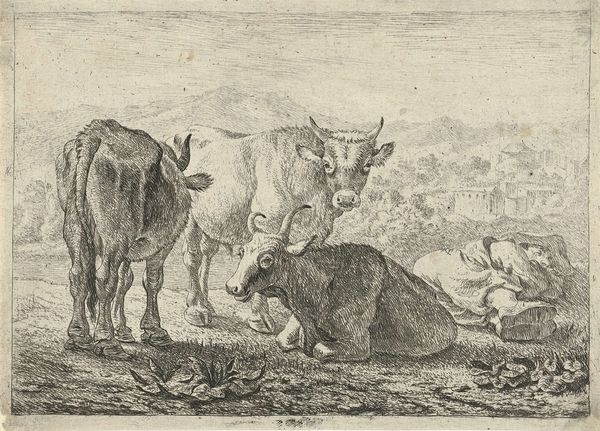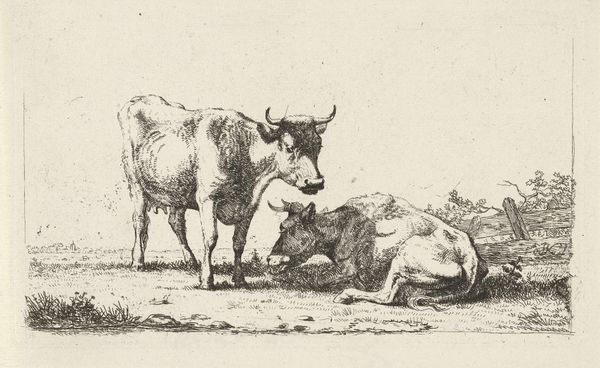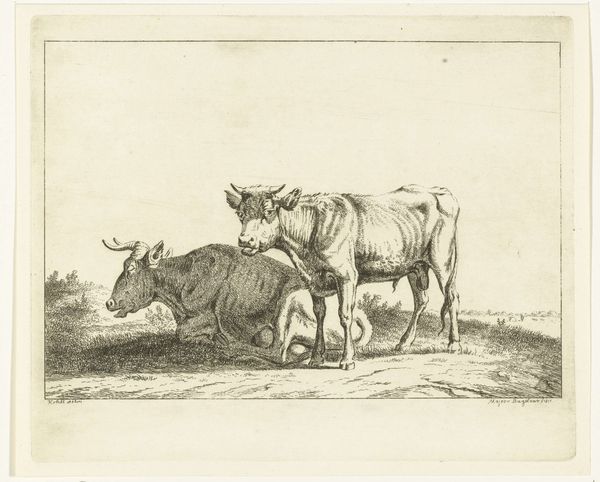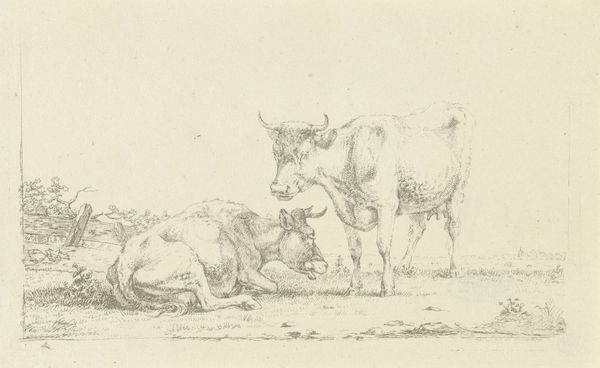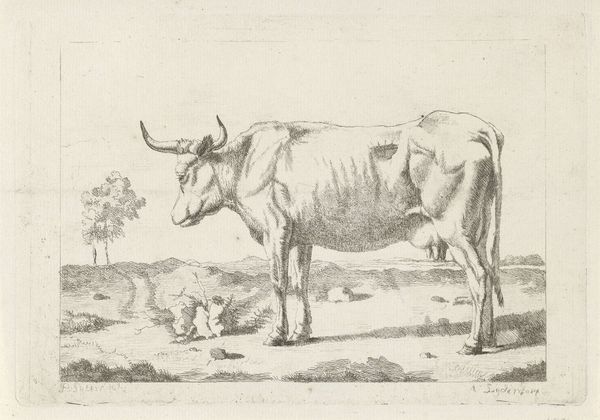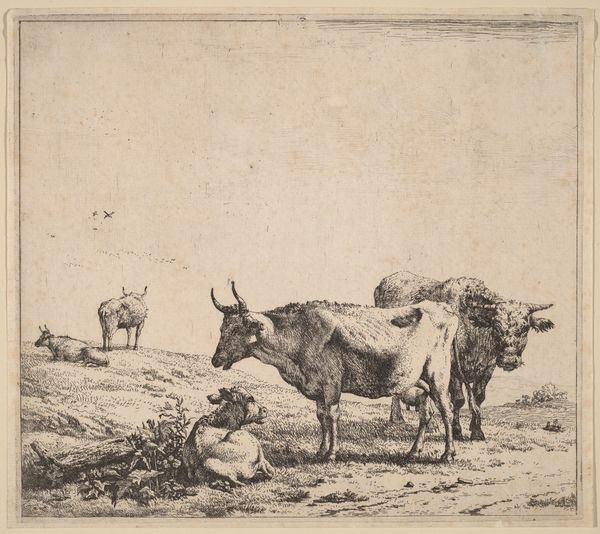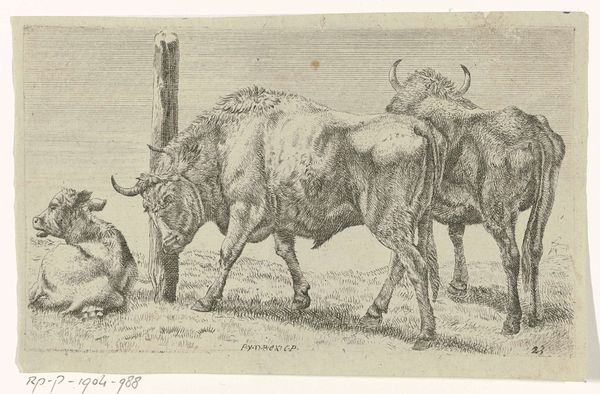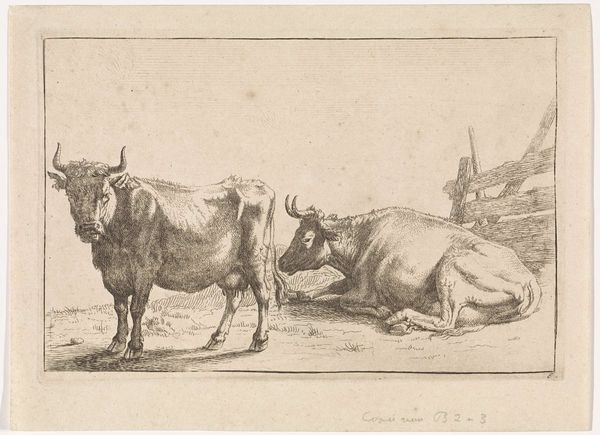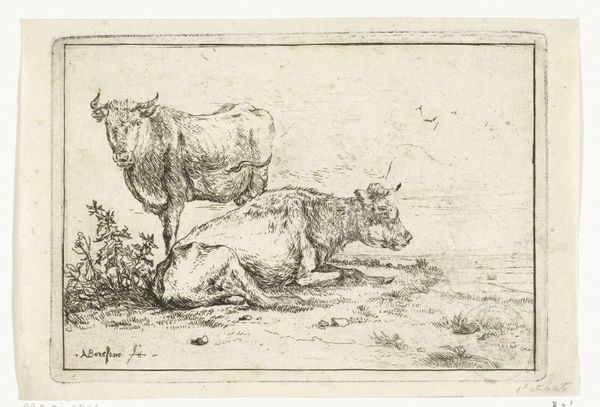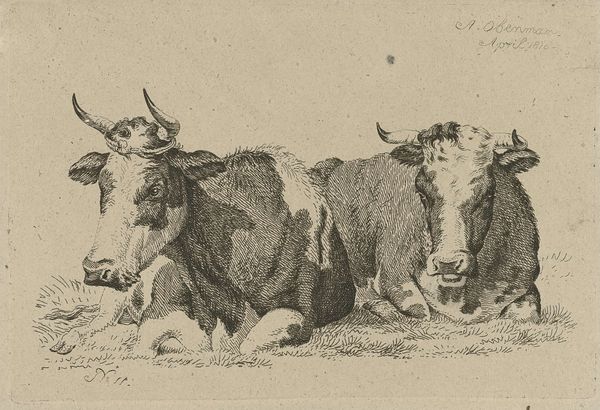
drawing, paper, pen
#
drawing
#
pen sketch
#
landscape
#
paper
#
pen
#
realism
Dimensions: height 89 mm, width 119 mm
Copyright: Rijks Museum: Open Domain
Curator: Look at this subtly sublime pen drawing by Frédéric Théodore Faber from 1806. It’s entitled *Drie ossen en twee schapen,* housed here at the Rijksmuseum. Editor: The title does what it says on the tin! I find this drawing strangely peaceful—there's a serene laziness about the animals that resonates. The scale feels almost miniature, drawing me into its quiet world. Curator: Indeed, the artist has captured a serene pastoral scene. Let’s analyze Faber's mark-making here. The use of line, repeated and layered, builds volume and texture effectively using simple means, though arguably a very simple tonal scale. Editor: I see what you mean. The lines feel delicate, like whispered secrets in the grass. It's all monochrome, and that almost focuses your attention on the composition rather than distracting with colour. It invites a sort of contemplation on the lives of these grazing creatures. I mean, imagine spending your whole life in a field, gently chewing. Curator: Exactly. Consider the foreground and background as they're presented here, suggesting space simply through density of line. The varying pressures applied with the pen yield this surprising dimensionality. Faber constructs an exercise in both observation and compositional control within a landscape tradition. Editor: Maybe that's why it's so calming. There is the lack of sharp contrasts or jarring elements: everything’s flowing from line to line and plane to plane... Like the gentle curve of those oxen horns. I appreciate that the artist has managed to convey so much with so little. Curator: Precisely! It reminds us that careful attention and compositional awareness is essential even in apparent simplicity. The apparent naturalness here emerges, rather, from careful stylistic control. Editor: Ultimately, it’s a sketch that lingers. Even without a dramatic story, it draws you in, doesn’t it? You are seeing the everyday made remarkable. Curator: Indeed, a gentle reminder of art's capacity to elevate the ordinary. It is almost a form of structuralist landscape writing in miniature.
Comments
No comments
Be the first to comment and join the conversation on the ultimate creative platform.
